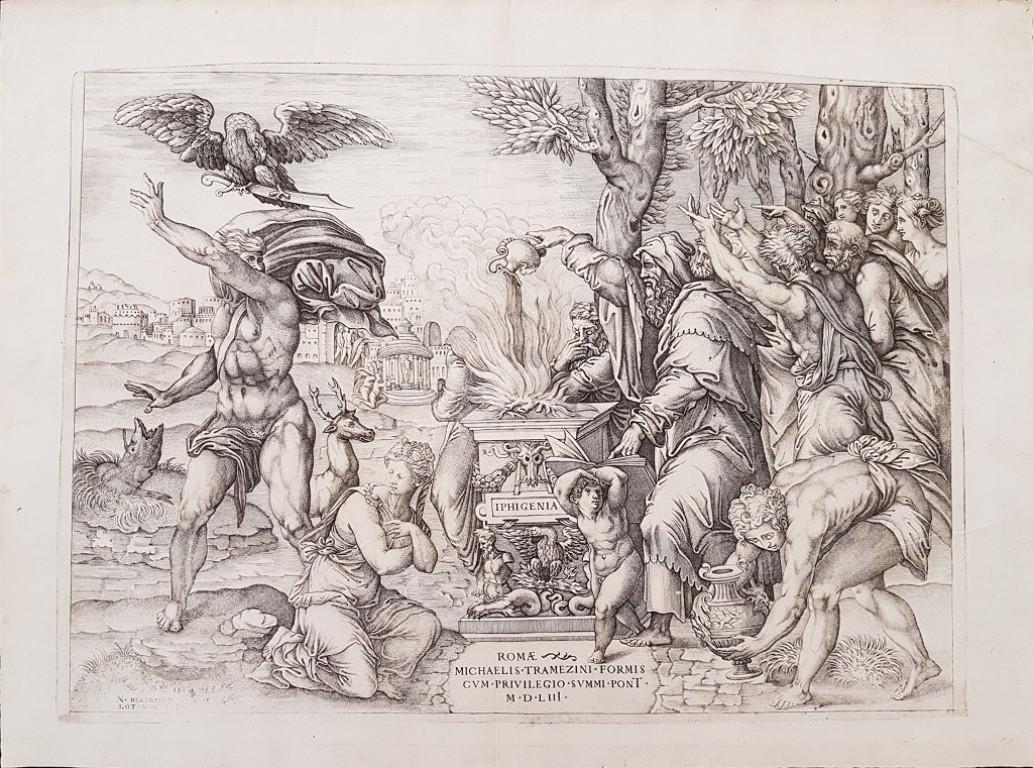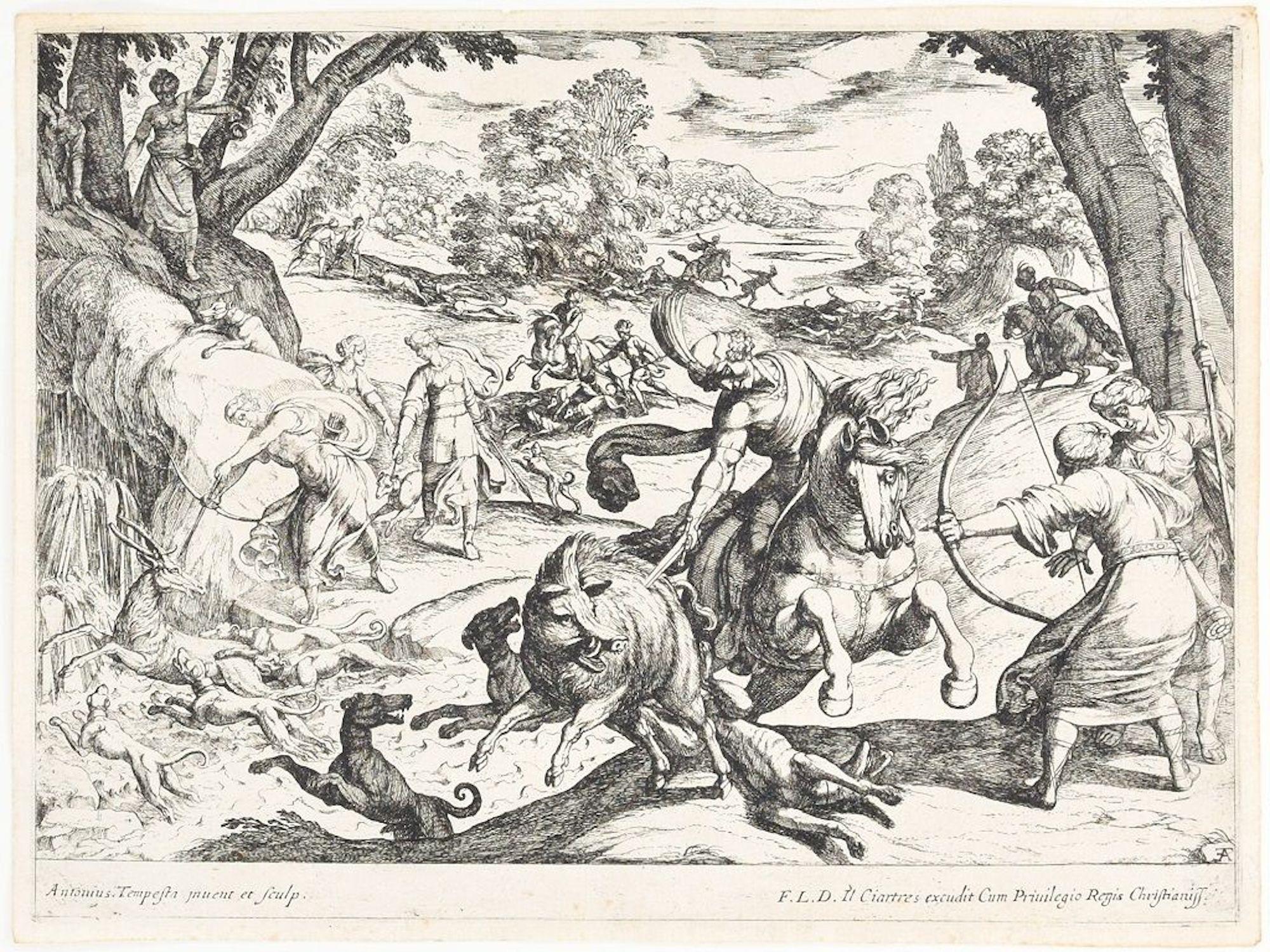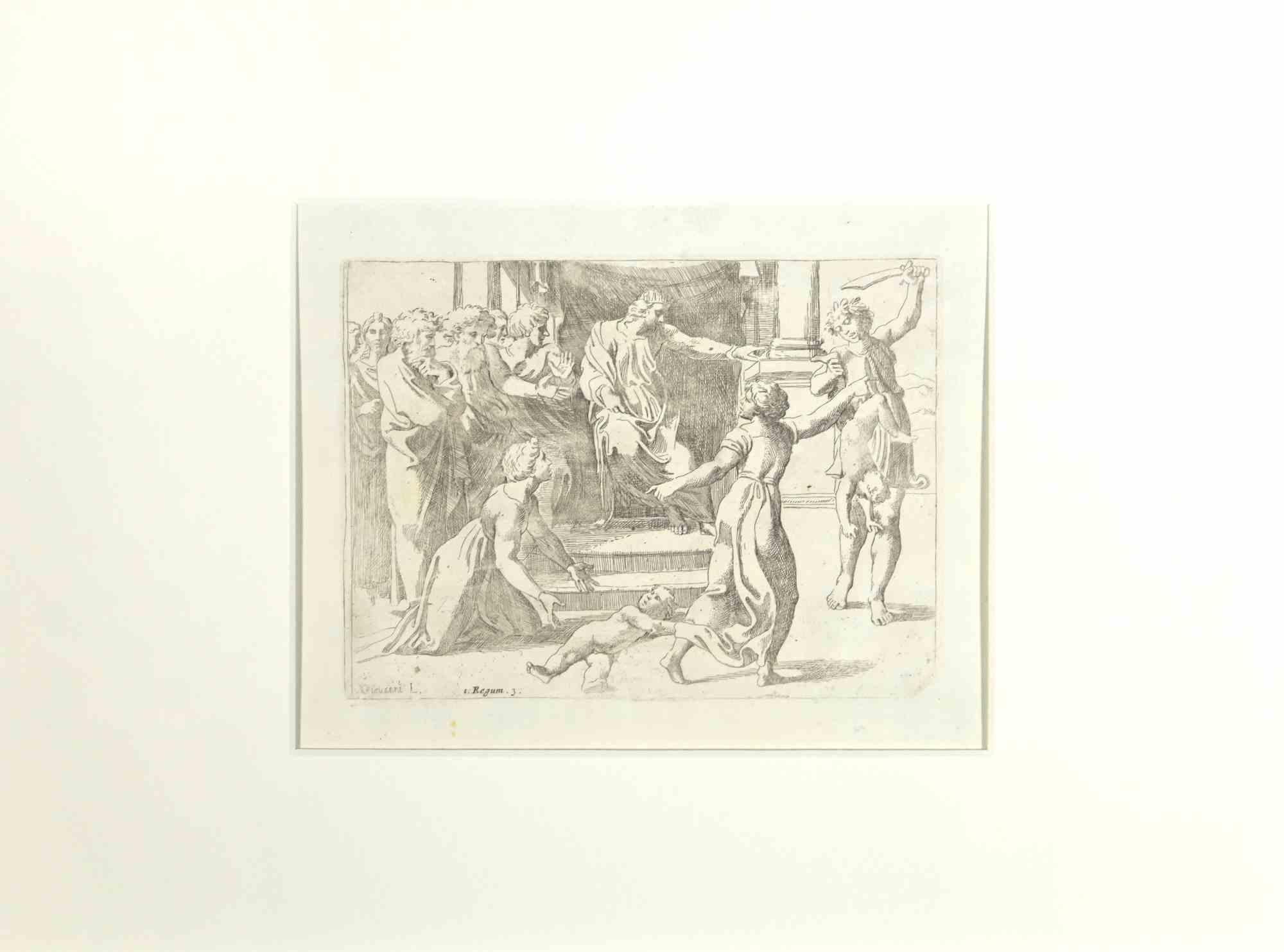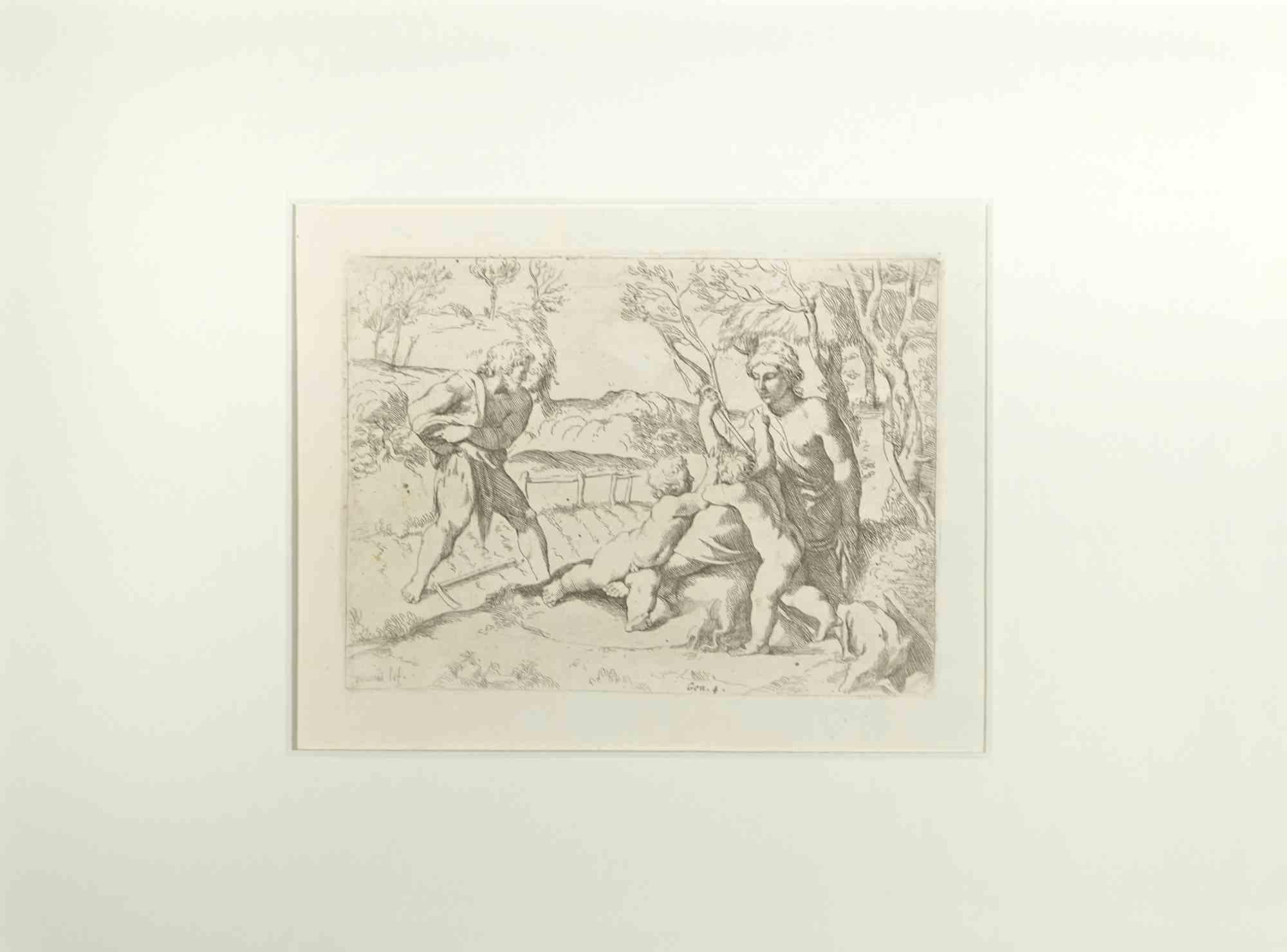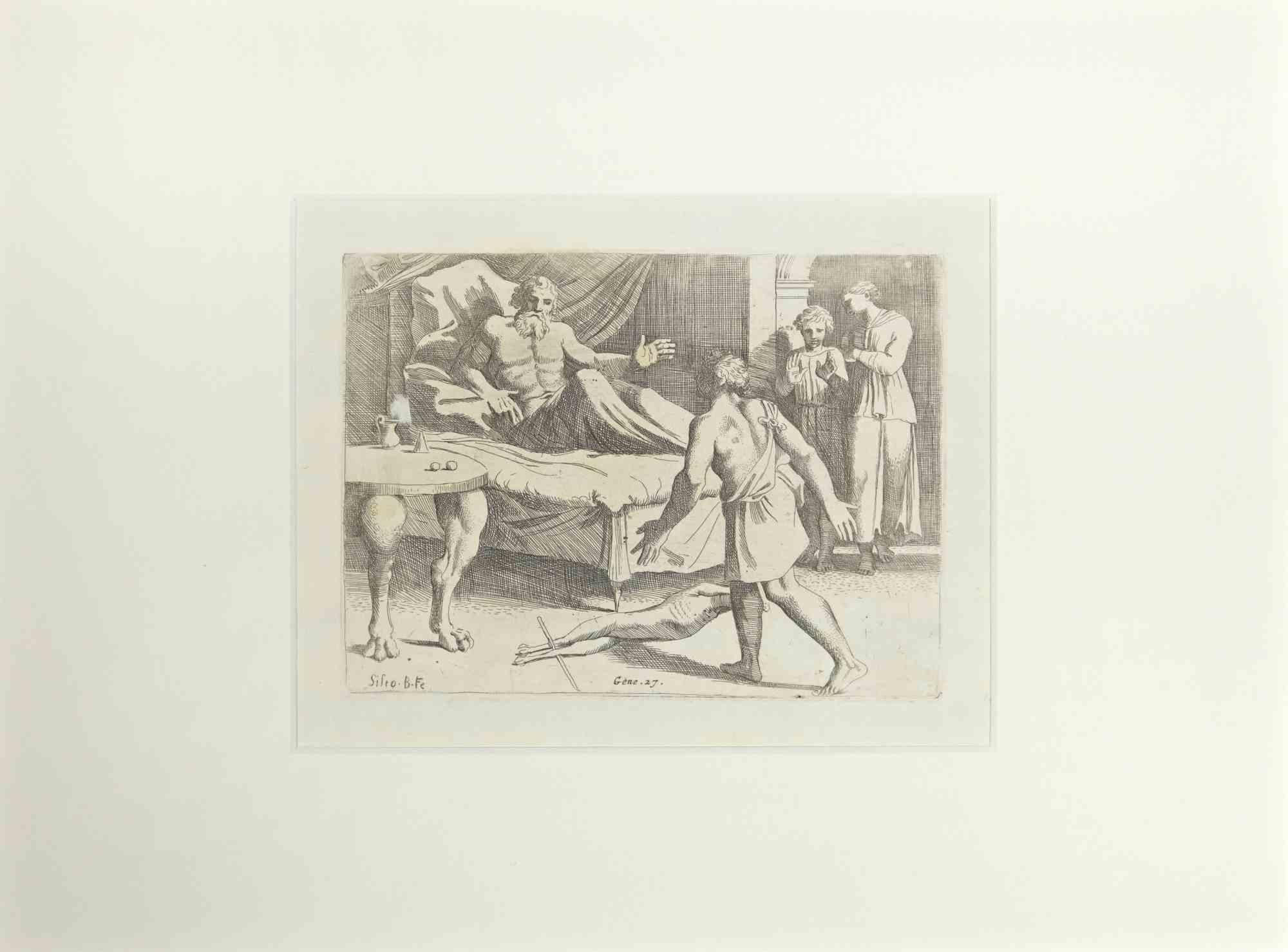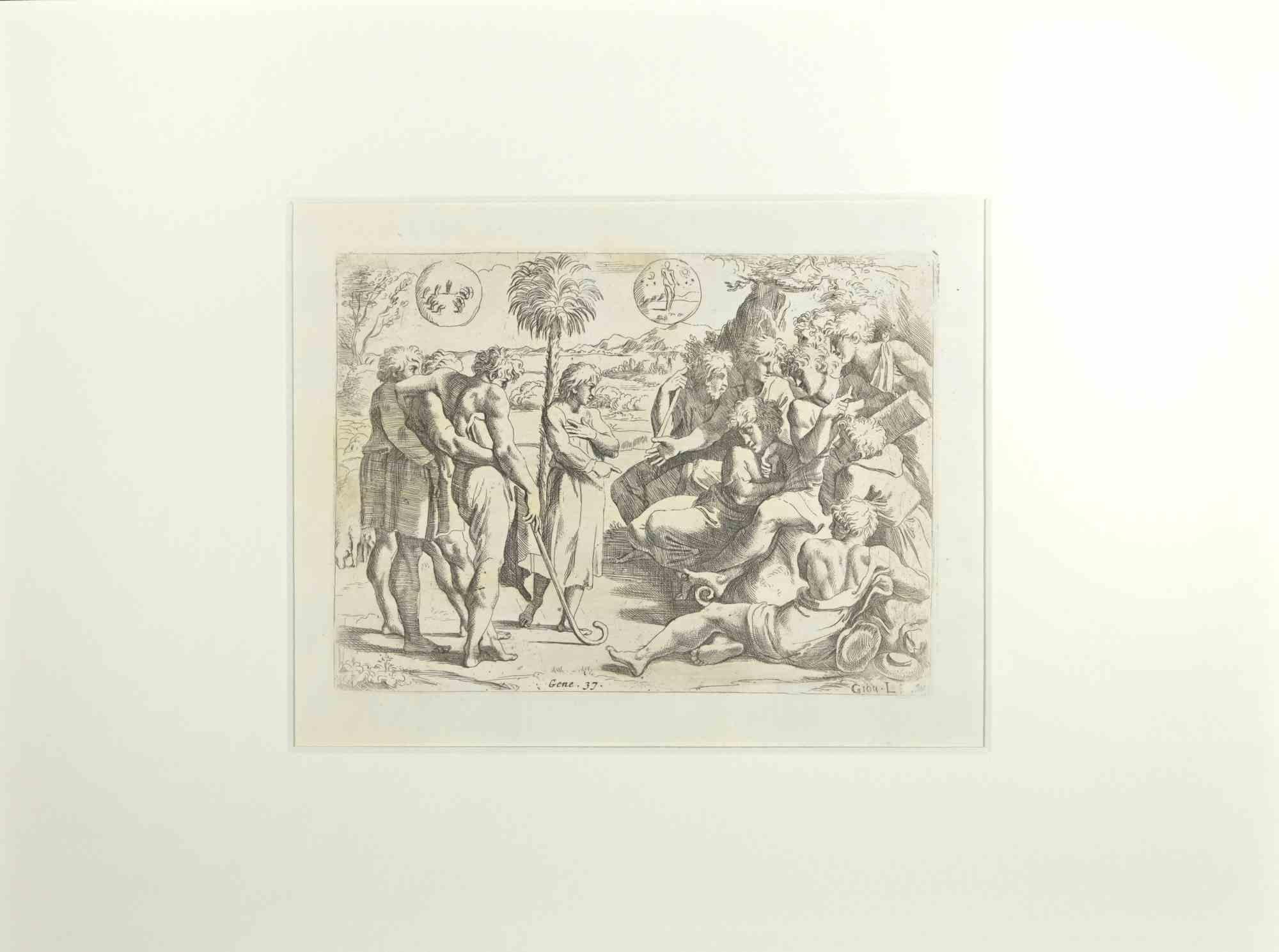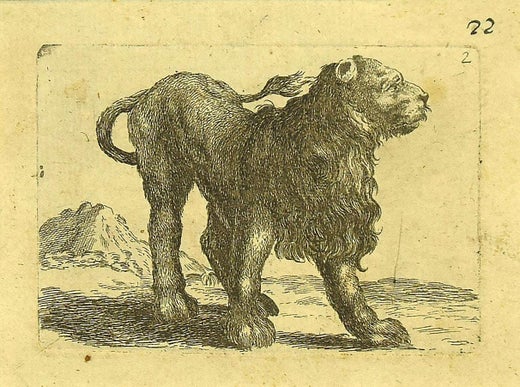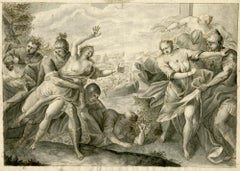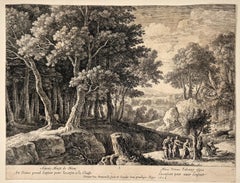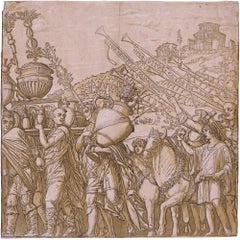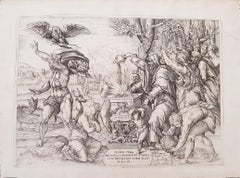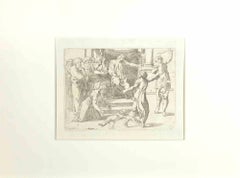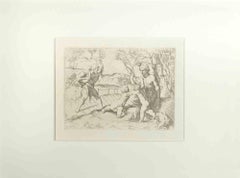Items Similar to Cainus fratri necem molitur (Cain kills his brother), Plate I Battles from Old T
Want more images or videos?
Request additional images or videos from the seller
1 of 4
Antonio TempestaCainus fratri necem molitur (Cain kills his brother), Plate I Battles from Old T1613
1613
$2,500
£1,907.44
€2,171.47
CA$3,513.78
A$3,862.50
CHF 2,027.79
MX$45,927.87
NOK 26,041.47
SEK 23,720.96
DKK 16,224.35
About the Item
Rome: Nicolas van Aelst, 1613.
Engraving on cream laid paper with a foolscap watermark, 8 x 11 1/4 inches (203 x 282 mm), thread margins. Scattered expert repairs including minor pulp patches, minor rubbing and one 1/4 inch area of in-painting in the top left margin, in the area of the God's robes. All condition issues are consistent with age, and do not present significantly on the recto. A fascinating depiction from the Book of Genesis.
[Bartsch XVII.129.236].
Antonio Tempesta's Cainus fratri necem molitur is an extremely interesting composition that tells the story of Cain and Abel, the first born sons of Adam and Eve, in four visual chapters.
The story begins in the far background to the right of the central action. An intimation of the the recent past, we see Cain, a farmer, and Abel, a shepherd, making their sacrifices to God. Cain offers the fruits of the land, while Abel offers the first born lamb from his flock. God prefers Abel's offering, and shows favor to him. Cain, dejected, invites Abel into the fields, where he slays his brother in jealousy. The moment is depicted with intensity in the right foreground of Tempesta's composition where we see the moment that Cain raises his hand in anger to bludgeon Abel with a donkey jaw. The setting is a field replete with animals living in harmony, except for two hares frightened into flight by the violence, and in the recess between the figures of Cain and Abel we see a hound, a symbol of loyalty, looking on at the murder with his head bowed in shame. God, who witnessed the crime, punishes Cain by banishing him to wander restlessly for the rest of his life in the Land of Nod (east of Eden). This can be seen unfolding in the left foreground of the image. God then marks Cain so that no person taking pity on him will end his life, seen here as the bookend closing this chapter of the story in the far-left background. This work is an exceptionally engaging and technically complex tableau depicting the first death in the Bible. Although the plate was created in 1613, dating of the watermark indicates that this impression was likely printed between 1640 and 1725.
- Creator:Antonio Tempesta (1555 - 1630, Italian)
- Creation Year:1613
- Dimensions:Height: 11.25 in (28.58 cm)Width: 8 in (20.32 cm)
- Medium:
- Movement & Style:
- Period:Early 17th Century
- Condition:
- Gallery Location:Middletown, NY
- Reference Number:Seller: BH5941stDibs: LU1979210871102
Antonio Tempesta
Antonio Tempesta was born and trained in Florence and painted in a variety of styles, influenced to some degree by Counter-Maniera or Counter-Mannerism. He enrolled in the Florentine Accademia delle Arti del Disegno in 1576. He was a pupil of Santi di Tito, then of the Flemish painter Johannes Stradanus. He was part of the large team of artists working under Giorgio Vasari on the interior decoration of the Palazzo Vecchio in Florence.
About the Seller
5.0
Vetted Professional Seller
Every seller passes strict standards for authenticity and reliability
Established in 2004
1stDibs seller since 2022
80 sales on 1stDibs
Typical response time: 22 hours
- ShippingRetrieving quote...Shipping from: Middletown, NY
- Return Policy
More From This Seller
View AllIl Ratto della Sabine – Italian School 18th century
Located in Middletown, NY
An intense scene of an incident in the legendary history of Rome.
Italian School 18th century, circa 1700.
Ink and wash in brown and grayish black ink on cream laid paper, 12 1/8 x...
Category
Late 18th Century Italian School Figurative Drawings and Watercolors
Materials
Watercolor, Laid Paper, Ink, Graphite, Handmade Paper
The Birth of Adonis; Plate 1 from The Story of Adonis
By Herman van Swanevelt
Located in Middletown, NY
Etching with engraving on thin laid paper with an early and large unidentified heraldic watermark with a windmill, and the collector's stamp of Count F. J. von Enzenberg (1802-1879),...
Category
Early 17th Century Old Masters Landscape Prints
Materials
Laid Paper, Engraving, Etching
The Triumph of Caesar: Plate IV
By Andrea Mantegna
Located in Middletown, NY
Andreani, Andrea (Italian, about 1558–1610), after Andrea Mantegna (Italian, 1431-1506)
Chiaroscuro woodcut in colors printed from four blocks on laid paper in dark brown, grey, and...
Category
16th Century Old Masters Figurative Prints
Materials
Ink, Handmade Paper, Laid Paper, Woodcut
Hercule Gaulois, ou L’Éloquence
By Charles-Nicolas II Cochin
Located in Middletown, NY
A classical chiaroscuro woodcut after Raphael executed by Charles Nicolas Cochin Père (1688-1754) & Vincent Le Sueur (1668-1743) . Printed from two bloc...
Category
Early 18th Century Old Masters Figurative Prints
Materials
Laid Paper, Woodcut
Venus Lamenting over the Death of Adonis
By Herman van Swanevelt
Located in Middletown, NY
c. 1654. Etching with engraving on thin laid paper with an early and large unidentified watermark with a sundial and a many-pointed star, and an unidentified collector's stamp in the...
Category
Mid-17th Century Old Masters Landscape Prints
Materials
Handmade Paper, Engraving, Etching
Mythological combat scene with Roman soldiers on horseback.
By Virgil Solis
Located in Middletown, NY
Pen and brownish black ink on grayish-cream laid paper, 6 1/2 x 8 inches (165 x 175 mm), irregular hexagonal sheet with margins. Some archival repairs along the top sheet edge, scatt...
Category
16th Century Old Masters Figurative Drawings and Watercolors
Materials
Ink, Laid Paper, Pen
You May Also Like
The Sacrifice of Iphigenia
By Nicolas Beatrizet
Located in Roma, IT
Black and white etching and drypoint on wire rod paper, representing the myth of the sacrifice of Iphigenia. On the altar is inscribed "Iphigenia" in capital letters. On the lower left margin is inscribed "N. Beatrizet Lo Taringus F.", slightly discolored (Beatrizet usually signed his plates with the letters "N. B. L. F."). At the center of the lower margin is inscribed "Romae, Michaelis Tramezini formis cum privilegio summi Pont. M.D.L.III".
After a drawing attributed to either Michelangelo Buonarroti, Salviati, or Baccio Bandinelli...
Category
16th Century Old Masters Figurative Prints
Materials
Drypoint, Etching
Hunting Scene - Original Etching by Antonio Tempesta - Early 17th Century
By Antonio Tempesta
Located in Roma, IT
Image dimensions: 20.4 x 27.5 cm.
Hunting Scene is a wonderful black and white etching on thick laid paper, realized by the Italian master, Antonio Tempesta (1555-1630).
Monogramm ...
Category
Early 17th Century Baroque Figurative Prints
Materials
Etching
Old Testament Story - Etching by Giovanni Lanfranco - 1607s
Located in Roma, IT
Old Testament Story is an Etching print realized by the artist Giovanni Lanfranco after Agostino Carracci
About The Old Testament Story, 1607 ca.
...
Category
Early 1600s Old Masters Figurative Prints
Materials
Etching
Genesis 4 -Old Testament Story - Etching by Giovanni Lanfranco - 1607
Located in Roma, IT
Genesis 4 -Old Testament Story is an Etching print realized by the artist Giovanni Lanfranco.
About The Old Testament Story, 1607 ca.
Passpartout ...
Category
Early 1600s Old Masters Figurative Prints
Materials
Etching
Genesis 27 - Old Testament Story - Etching by Sisto Badalocchio - 1607
Located in Roma, IT
Genesis 27 -Old Testament Story is an Etching print realized by the artist Sisto Badalocchio.
About The Old Testament Story, 1607 ca.
Passpartout i...
Category
Early 1600s Old Masters Figurative Prints
Materials
Etching
Genesis 37 - Old Testament Story - Etching by Giovanni Lanfranco - 1607
Located in Roma, IT
Genesis 37 -Old Testament Story is an Etching print realized by the artist Giovanni Lanfranco.
About The Old Testament Story, 1607 ca.
Passpartout...
Category
Early 1600s Old Masters Figurative Prints
Materials
Etching
More Ways To Browse
Engraving Battle
Cain And Abel
Larry Rivers Signed
Les Chants De Maldoror
Marc Chagall Adam And Eve
Marcel Vertes Lithograph
Medical Paintings
Obama Hope Poster
Original Vintage Moulin Rouge
Pianos Made In Berlin Germany
Picasso Pigeons
Rene Magritte Signed
Rilke Portfolio
Romare Bearden 1980
Rossini Dis E Inc
Salvador Dali Orange
San Francisco Opera
Ship Etching
